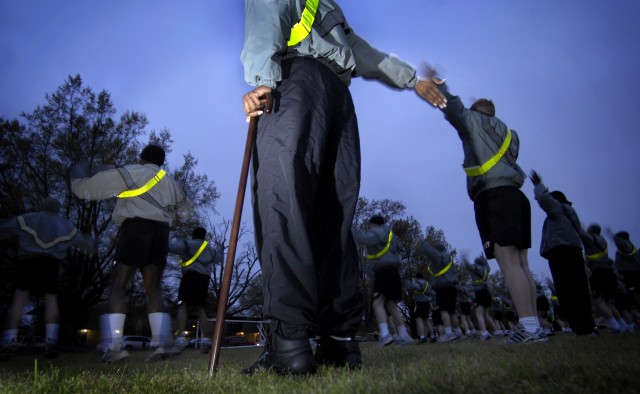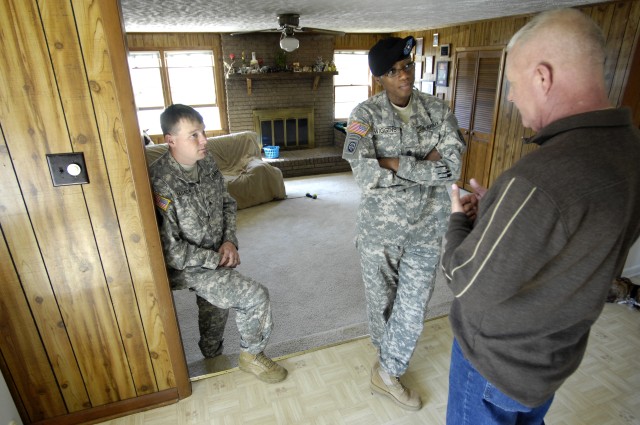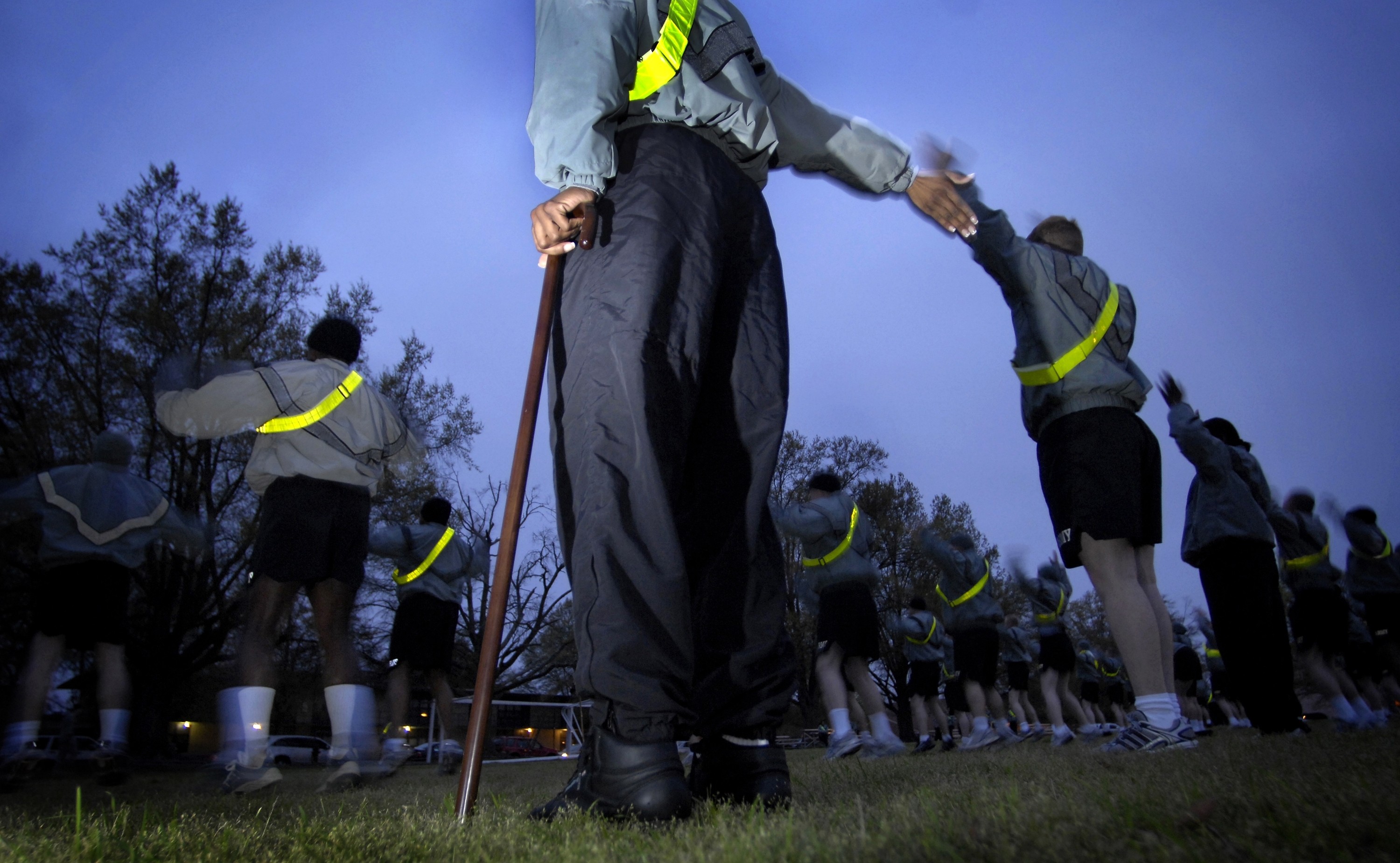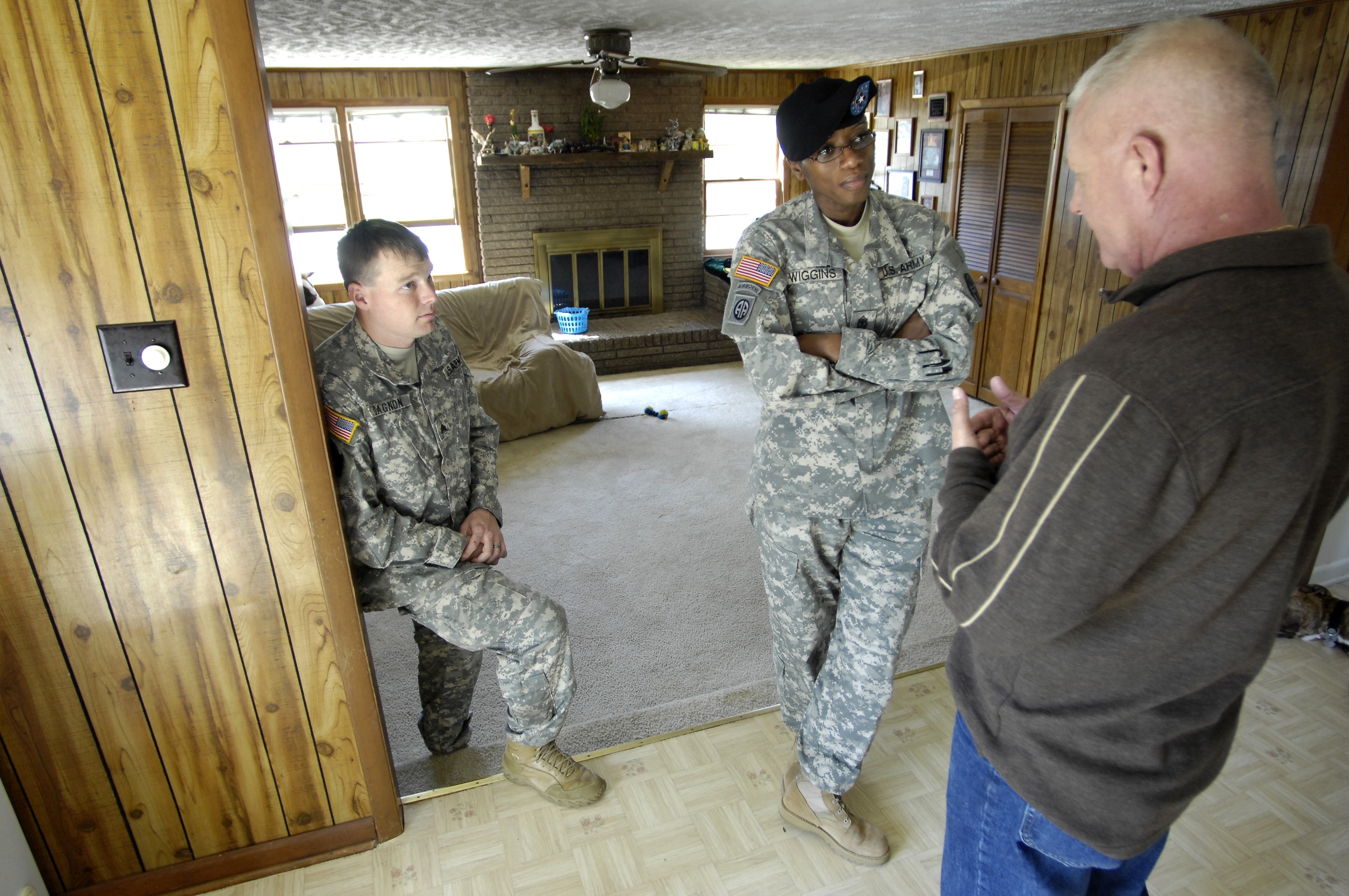Taking care of Soldiers is a tradition as old as the Army itself.
Gen. George Washington led the way with an order to vaccinate the entire Continental Army for smallpox, a feat never done before. And young Maj. Walter Reed led the fight against yellow fever, isolating the carrier and providing treatment for the disease at the beginning of the 20th century.
Several years later an Army doctor, Maj. Carl Darnall, devised a way to chlorinate drinking water, forming the basis for water purification.
Recently, Army leaders demanded swift and sweeping changes when problems were identified with the level of outpatient care provided to wounded, ill and injured Soldiers returning to the United States from theaters of war.
Brig. Gen. Michael S. Tucker, the former assistant Army surgeon general for warrior care and transition, was asked to devise an Army Medical Action Plan to address issues ranging from Soldier accountability, the command-and-control infrastructure of medical care, and better communications between caregivers and their patients.
The result of AMAP's efforts was the creation of 35 warrior transition units that provide specialized treatment plans for each wounded Soldier and a solid support system that includes administrative and family support services to assist wounded Soldiers and their families with everything from pay problems, housing, transportation, educational opportunities and training to recreation and fitness.
Sprawled across more than three counties in north central Texas, Fort Hood is the Army's most populous post, with more than 50,000 Soldiers. The two-division post is also home to the Army's largest WTU, with more than 1,200 injured or chronically ill Soldiers out of the more than 11,000 Armywide. Col. Casper Jones, commander of Fort Hood's Carl R. Darnall Army Medical Center, said that the heart and soul of this new Soldier-care system is based upon an approach called the "triad of care."
The triad is composed of three critical elements according to the AMAP plan: a squad leader, a registered nurse case manager and a primary care provider, Jones said.
"This new level of more-focused care for our wounded or ill Soldiers will help return them to duty much faster, or help smooth the way to get them back home with the care they need," said Jones.
But Jones said it hasn't happened without a price.
"When the WTU opened last year, Fort Hood's facility accommodated 172 wounded or ill Soldiers," he said. "Now we have close to 1,200. We've had the challenge of borrowing some of the best and brightest of our squad leaders, platoon sergeants and first sergeants from throughout the divisions at Fort Hood to make it happen. We've aggressively pursued hiring more nurses and doctors and increased the number of nurse case managers and primary-care providers to keep up with the demand."
Capt. Laurissa Elliott, commander of the WTU's Company B, said that of the three important elements of the triad of care the squad leader may be the most important in helping wounded Soldiers get back on their feet.
"They are pivotal to the mission of taking care of our Soldiers," Elliot said. "Our squad leaders are extremely devoted, and they're in this for the long haul."
Spc. Jamal James is a married Soldier who arrived at the Fort Hood WTU from South Korea last August with a torn muscle.
"Normally a squad leader is hard core," he said. "Here, he's more like a father. He helped me get where I had to go and saw that my family was well taken care of. When I had financial problems, he showed me where to go for help. He was there during the holidays, getting us involved with Thanksgiving and Christmas functions."
"They treat us like celebrities around here," said Pfc. Barry Chapman, a single soldier who fractured his back during jump school more than a year ago. "Our squad leaders are available to us 24 hours a day, seven days a week. If they can't help us, they go up the chain until they get an answer. This is a really nice place to heal."
Staff Sgt. Natasha Lynn and Sgt. Frederick Gardner are Fort Hood WTU squad leaders who believe strongly that what they do for wounded Soldiers not only helps those injured or ill, but in the long run also benefits the Army.
"Soldiers are 'it' as far as we're concerned and as far as the Army is concerned," said Lynn. "Our sole purpose is to help Soldiers heal and either return to duty or transition into the civilian world. Our primary responsibility is for the accountability and welfare of our Soldiers. We escort them to appointments, provide supervision in their work areas when needed, assist them filling out and filing paperwork, and provide reports to our leadership.
"We often find ourselves dealing with high-risk patients or home-bound patients who experience problems with medications late at night," said Lynn, who talks to each Soldier and tells him how important he is. "This is a very stressful job, but we always have to be upbeat. Our Soldiers don't often deal well with change, so it's important to keep life as stable as possible for them."
Gardner is a supply NCO with the Texas Army National Guard. He was selected as a squad leader after a lengthy interview process and has been assigned to Co. B since last July. Transitioning from a squad leader in a line unit into a squad leader who takes care of wounded, ill and injured Soldiers was quite an adjustment, he said.
"All of my career, I've been taught to deal with Soldiers using discipline as a tool. Here the primary tool is compassion. In a regular unit, everyone is treated the same," Gardner said. "Here, each Soldier is different, with different needs and requirements. Working issues with the medical board, coordinating leave with the Soldiers' appointments, and providing administrative support takes up an entire day very quickly.
"If a Soldier is released from the emergency room at 3 a.m., we have to be there to escort him," Gardner added. "Our day definitely doesn't end at 4:30
p.m. I had one case where a Soldier had surgery and was in a convalescent status. She had to get to a medical-care facility about 30 miles from here, on Mondays, Wednesdays and Fridays for follow-up appointments, but couldn't drive herself. So, for six weeks I drove her to the appointments."
Col. Gloria Long oversees the case-management side of Fort Hood's triad of care, in which 42 case managers take care of close to 1,200 Soldier patients.
"Each case manager is a registered nurse who is a pivotal point between the squad leaders and primary-care providers to get wounded or ill Soldiers, and their families, not only the medical care they need, but also take care of their social and financial needs as well," she said.
Long said that each case manager handles case loads for as many as 27 patients, whom they see at least once a week.
"Patients' medical information and immediate needs are assessed, as well as any social concerns or family needs that may interfere with their ability to heal," she said. "A case manager sees between 10 and 15 patients a day, working many cases involving complex issues and needs."
"Case managers do an excellent job of making sure our appointments are scheduled, our medications are updated and other issues are addressed with the Medical Evaluation Board," said Chapman. "I go through periodic physicals to see how my body is healing and I get evaluated every three months."
At Fort Hood's Thomas Moore Health Clinic, two hallways of provider offices and exam rooms have been set aside for the WTU and are staffed with primary-care providers, nurses and support staff. Dr. (Lt. Col.) Michael Wynn, chief of family and community medicine at the clinic, said six primary-care providers take care of about 200 patients each, with the help of a head nurse and three licensed nurse practitioners.
"These physicians provide initial medical screening for each patient and refer Soldiers to specialists," said Dr. (Capt.) James Park, the primary-care manager for the warriors in transition. "Most patients who go through this system are those with chronic back and knee pain, herniated traumas, cancer or diabetes." Park said that every patient is given intensive-care-unit-level care.
Soldiers who face injuries or illnesses that could affect their military careers go before a medical-evaluation board. Wynn said the board of five physicians meets with each patient to evaluate whether or not he will eventually return to active duty or transition into civilian life. The board members take assessments from the primary-care provider and appropriate specialists, and make their fitness-for-duty determinations based on regulatory guidance.
The Soldier and Family Assistance Center was created in partnership with the WTU to provide an array of services for wounded and ill Soldiers and their families in one convenient location. Donna Morrisey, Fort Hood's SFAC director, said the center provides benefits for Soldiers far above simple in- and out-processing.
"We help Soldiers and their families to either go back to duty or transition out of Army life," Morrisey said. "We educate them about Department of Veterans Affairs benefits, financial assistance, budget management and the the Army Emergency Relief fund, and help with transition assistance by providing job counselors, job fairs and transition employment. We also have a guidance counselor who provides information about education opportunities, including classes the Soldier can attend while at the WTU.
Morrisey said that in addition to financial counseling and assisting Soldiers and their families with finding and reporting such things as credit-report errors, they also frequently take advantage of programs that deal with problems caused by long separations due to deployments. "We also provide anger management and relationship enhancement counseling, along with helping couples with child-care issues."
The infrastructure for the Fort Hood WTU is a battalion-sized unit located just outside Darnall Army Medical Center. Dubbed Rough Rider Village, it's a temporary collection of pre-fabricated buildings expected to be replaced this summer by five companies and a battalion headquarters.
"Creating a command-and-control infrastructure in an organization where meeting individual needs is paramount is an extremely daunting task," said WTU commander Lt. Col. Timothy Snider.
With a roughly 400-percent in-crease in Soldier-patients over the past year, "it's difficult to add and develop cadre and civilian staff to handle the increasing operations tempo," he said.
First Sgt. Devoda Owens, a Reservist on active duty for the past five years and Co. B's first sergeant, said the force structure is a mixture of active duty, Reserve and National Guard Soldiers.
"Our squad leaders and platoon sergeants bring a lot of medical experience from both the military and civilian worlds," Owens said. "I've got 294 Soldier-patients, each with some type of medical issue. In a regular unit a first sergeant may have three or four Soldiers dealing with injuries at one time. Here, everyone has an injury of some type. My platoon sergeants call me at all times of the day or night with issues ranging from suicide threats to medication overdoses to domestic abuse and some of the other issues first sergeants face.
"But watching these squad leaders and platoon sergeants deal with these Soldiers as individuals has been heartening. One of our Soldiers came to us with cancer and had only four to six weeks to live. His dying wish was to go back to Hawaii, where he was originally from. His family still lives here in the Killeen area, so it was difficult to keep the support system for him here and to check on his status there. But squad leaders made sure his grass was cut and occasionally started this car to keep it in good running condition," Owens added.
Quarters for the Soldier-patients at Fort Hood consist of three-room pre-fabricated buildings with a common kitchen area and bathroom. Pfc. Anthony Teriele, a single patient in Co. B who was diagnosed with Type 1 diabetes at the end of basic training, said that living conditions within the WTU are about as good as they get.
"It's important for guys like me, who are working through their medical problems, to not have to worry about our living conditions. We have our own rooms, with a 32-in flat-screen TV, and will soon have our own cell phones and laptop computers."
For cadre, staff and patients, life will be even better this summer. Brian Prediger, DAMC's chief of facilities, a 5,000-square-foot traumatic brain injury rehabilitation center - a $15 million initial effort.
Prediger said that by 2011 the Fort Hood WTU will be housed in a $61 million megaplex that will include a 400-bed barracks area, a 16,000-squarefoot dining facility, a 15,000-squarefoot SFAC area, and a parking area large enough to house between 700 and 800 spaces.








Social Sharing